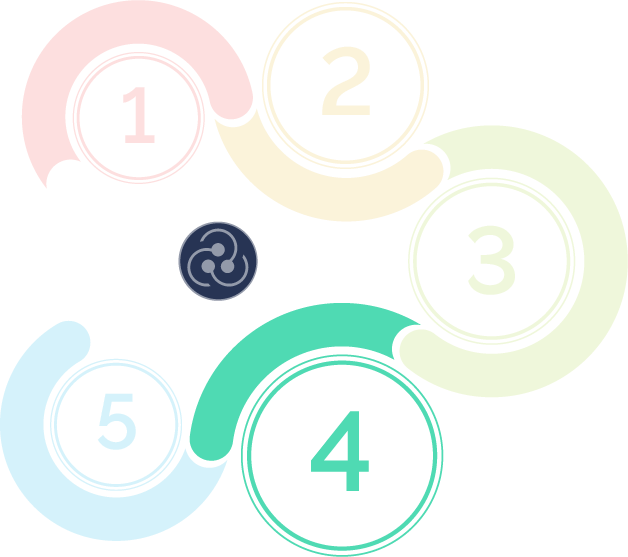Stage 4
Tackling Scope 3 Emissions
In Stage 4, “Tackling Scope 3 Emissions,” health care suppliers focus on measuring, setting goals, and implementing strategies to address emissions within their organization’s value chain activities beyond its direct control.
This stage involves conducting assessments, quantifying Scope 3 emissions, and initiating measurement and reporting. Additionally, goals, transition plans, and implementation strategies are developed while considering health equity. Researching emission reduction approaches, engaging value chain partners, advocating for sustainable practices, and adopting relevant metrics and standards are essential components of this stage. Through these actions, health care suppliers can significantly reduce their overall carbon footprint and contribute to a more sustainable supply chain.
Stage 1
Understanding and Navigating the Regulatory Landscape
Stage 2
Governance and Organizational Planning
Stage 3
Tackling Scope 1 & 2 Emissions
Stage 4
Tackling Scope 3 Emissions
Stage 5
Striving for Continuous Improvement

Stage 5
Striving for Continuous Improvement
Stage 3
Tackling Scope 1 & 2 Emissions
=
Indicates the resource may require payment or be behind a paywall.
Actions
Begin measuring and reporting the most feasible Scope 3 emissions categories (i.e., within the organization’s control)
- Conduct an assessment to identify and quantify Scope 3 emissions across the organization’s value chain, including both upstream and downstream activities
- E.g., business travel, logistics, operational waste
Carbon Accounting 101
Catalyzing Collective Action to Decarbonize Healthcare
Sustainability Roadmap for Health Care
Corporate Value Chain (Scope 3) Standard
EPA Scope 3 Inventory Guidance
Health Care Emissions Impact Calculator
Address Scope 3 emissions within the organization’s control
- Determine methods for measuring/estimating Scope 3 emissions within the organization’s control
- E.g., spending
- Create brief descriptor of Scope 3 categories and how to determine which are relevant w/ resources
- Establish appropriate achievable goals and create transition plan and implementation plan which incorporate health equity
- Identify potential funding sources
- E.g., state/federal grants or other incentives
- Establish process for continual assessment of risks/threats/opportunities
Guide to the Aga Khan Development Network’s Carbon Management Tool
Scope 3 GHG Emissions Accounting Tool
Corporate Value Chain (Scope 3) Standard
EPA Scope 3 Inventory Guidance
Sustainability Roadmap for Health Care
Carbon Accounting 101
Address Scope 3 emissions not within the organization’s control
- Begin measuring and reporting relevant Scope 3 emissions (by category) that organization does not have direct control over but can influence
- Create brief descriptor of scope 3 categories and how to determine which are relevant w/ resources
- Establish appropriate achievable goals and create transition plan and implementation plan which incorporate health equity
- Identify potential funding sources
- E.g., state/federal grants or other incentives
- Establish process for continual assessment of risks/threats/opportunities
- E.g., role of AI/digitization in reducing footprint, role of others in value chain
Supplier Action Guide
The 1.5°C Supplier Engagement Guide
Corporate Value Chain (Scope 3) Standard
EPA Scope 3 Inventory Guidance
Sustainability Roadmap for Health Care
Manufacture 2030
Understanding the Circular Economy and What Hospitals Can Do to Grow It
Conduct thorough research into available approaches and technologies for emissions reduction across Scope 3. Deliberate carefully to determine the most suitable matches for your assets and operational processes
E.g., Decreasing business travel
Guide to the Aga Khan Development Network’s Carbon Management Tool
Transforming The Medical Device Industry: Road Map To A Circular Economy
Understanding the Circular Economy and What Hospitals Can Do to Grow It
Advocate for sustainable practices, especially those that promote health equity, with business partners
Catalyzing Collective Action to Decarbonize Healthcare
The 1.5°C Supplier Engagement Guide
Supplier Action Guide
Introduce further metrics & standards for measuring and reporting Scope 3 emissions
Sustainable procurement — Guidance
Corporate Value Chain (Scope 3) Standard
Potential Challenges
Data Availability and Quality
Gathering accurate and reliable data on Scope 3 emissions from suppliers and across the value chain can be challenging due to data availability, consistency, and transparency issues
Guide to the Aga Khan Development Network’s Carbon Management Tool
Scope 3 GHG Emissions Accounting Tool
Carbon Accounting 101
Supply Chain Complexity
Managing emissions across a complex value chain involving numerous suppliers and partners requires coordination, data sharing, and collaboration
Manufacture 2030
Understanding the Circular Economy and What Hospitals Can Do to Grow It
Transforming The Medical Device Industry: Road Map To A Circular Economy
Stakeholder Engagement
Engaging suppliers and other stakeholders in emissions reduction initiatives can be challenging due to varying levels of commitment, capabilities, and priorities
Catalyzing Collective Action to Decarbonize Healthcare
The 1.5°C Supplier Engagement Guide
Supplier Action Guide
Sustainable Procurement
Identifying and selecting suppliers with low-carbon footprints and sustainable practices may require extensive supplier evaluation processes and potential adjustments to supply chain relationships
Supplier Action Guide
Sustainable procurement — Guidance
Sustainability Roadmap for Health Care

